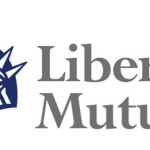The R.I. Department of Business Regulation has approved a 10 percent rate hike for NORCAL Mutual Insurance Co., the state’s largest medical malpractice insurer, effective Jan. 1, 2006.
The department has also agreed to a phased-in 70 percent hike in the rates charged in the residual market by the Medical Malpractice Joint Underwriting Authority. This is the first rate increase in the residual market in 10 years.
NORCAL writes about 1,500 risks. This latest increase is smaller than its recent actions. The company raised rates last January an average 19 percent and 43 percent in 2004.
The residual market JUA came in for criticism from the DBR for waiting 10 years to request a rate change. The JUA said it went through periods when it did not insure any hospitals and therefore did not actuarially review its rates. However the DBR hearings revealed the insurer of last resort had more often than not had hospitals among its insureds, and has written four since 2002. Still, it waited until 2005 to seek rate changes.
“While MMJUA’s justification for delay in filing might be valid if it were a competitive carrier, it makes no sense for a residual market. As the residual market, the MMJUA is required to accept all comers when market forces change. MMJUA has no control over this change and it would be almost impossible to predict with certainty when the change will occur. Proper operation of a residual market, therefore, requires MMJUA to keep all of its rates current. Failure to do so could actually result in the residual market becoming the carrier of choice since if the rates become similar to or lower than competitive market rates the residual market becomes a more attractive alternative. This is exactly the opposite of the proper function of a residual market,” the DBR said in its criticism.
In its original filing the JUA called for a 99.8 percent hike but that was negotiated down to 70 percent following intervention by the state Attorney General’s office. The increase affects three of its hospitals along with other risks in the JUA.
In the decision written by DBR hearing officers Elizabeth Kelleher Dwyer and Paula M. Pallozzi, the state approved JUA increases spread over time to spare insureds sudden rate shock. It is allowing an aggregate rate level increase of 35 % to be effective Nov.1, 2005 and a second separate base rate increase of 25.9% effective Nov. 1, 2006.
In the NORCAL decision, the DBR rejected several criticisms by Jay Angoff, an actuary hired by the R.I. Trial Lawyers Association to oppose the increase. This prompted an unusual press release from the Physicians Insurers Association of America celebrating the state’s decision.
“This adds another credible organization to the list of those finding Angoff’s work as a hired gun for the trial bar to be unfit for use as any kind of analytical tool,” said PIAA president Larry Smarr. “As Angoff and other hucksters for the trial lawyers make their presentations in various states, more and more decision makers are refusing to accept the bogus data and arguments they pedal. We hope the media begin to realize this soon as well.”
The PIAA is an association of doctor and provider owned medical liability insurance companies.
Topics Pricing Trends
Was this article valuable?
Here are more articles you may enjoy.


 Everton FC Buyer Accused of Fraud, Double-Pledging Assets in Lawsuit
Everton FC Buyer Accused of Fraud, Double-Pledging Assets in Lawsuit  China Construction Bank Sued in US Over Reinsurance Fraud Losses
China Construction Bank Sued in US Over Reinsurance Fraud Losses  Berkshire’s Jain on Cyber: ‘The Mindset Should Be You’re Not Making Money’
Berkshire’s Jain on Cyber: ‘The Mindset Should Be You’re Not Making Money’  Liberty Mutual Posts $1.5B Net Income for Q1, Reversing Loss
Liberty Mutual Posts $1.5B Net Income for Q1, Reversing Loss 

